NAIC's architectural facility in England’s car-making heartland
Designed by Cullinan Studio, the centre sits at the entrance to the University of Warwick campus
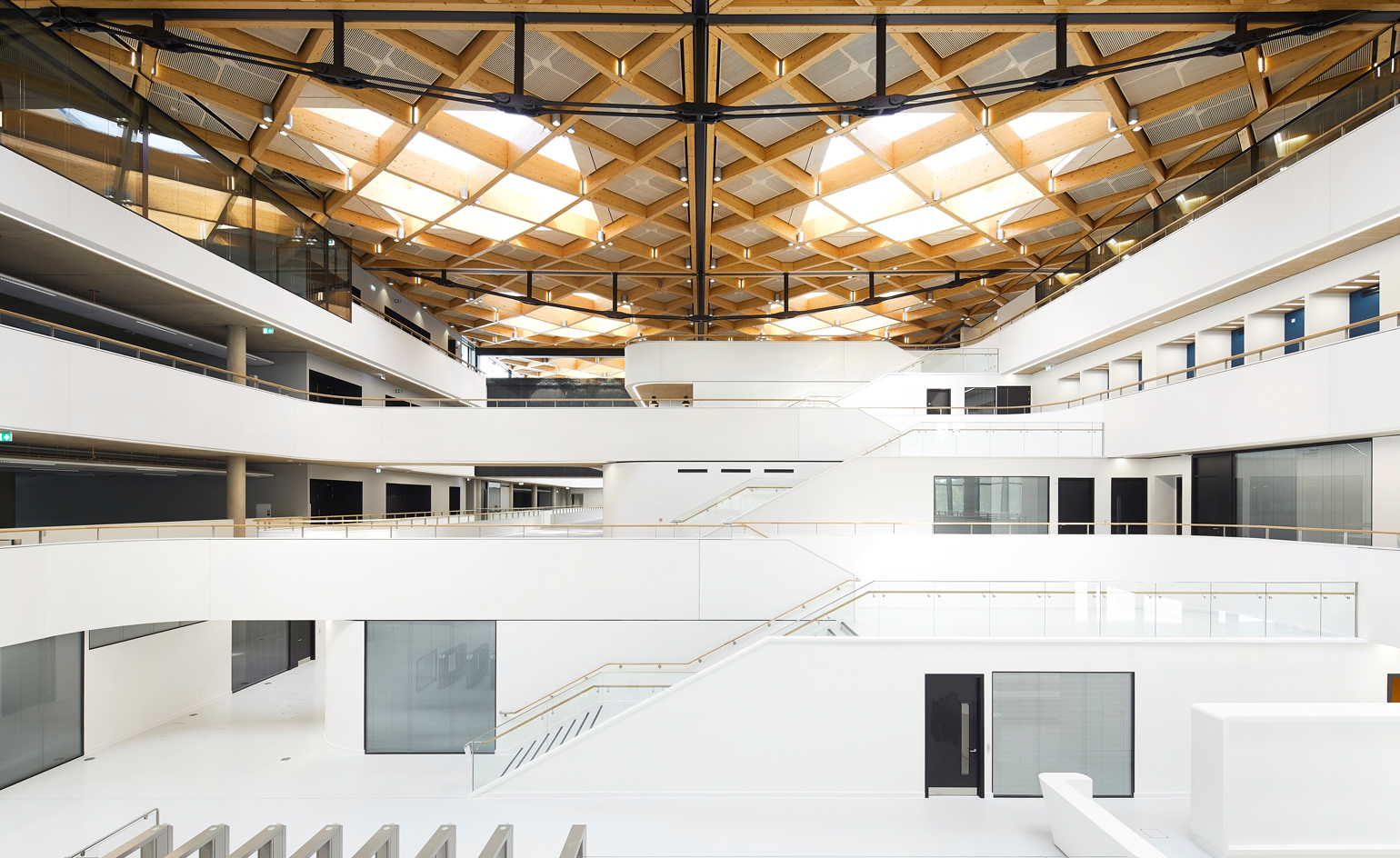
The new National Automotive Innovation Centre (NAIC) opened in February on the University of Warwick’s Midlands campus. The brief for the building was simple: devise a shared environment for research that could halve the time from original idea to final production, with both industry and academia under one roof.
The NAIC's ultimate goal is to develop future transport solutions that create zero accidents, emissions and congestion. The £150m centre is the result of a partnership between local businesses Jaguar Land Rover and Tata Motors plus the University of Warwick, with £15m of funding from the UK Government’s Research Partnership Investment Fund via Research England. Designed by Cullinan Studio, the centre sits on a 17,800 sq m site at the entrance to the University of Warwick’s main campus, offering good access to students and researchers alike.
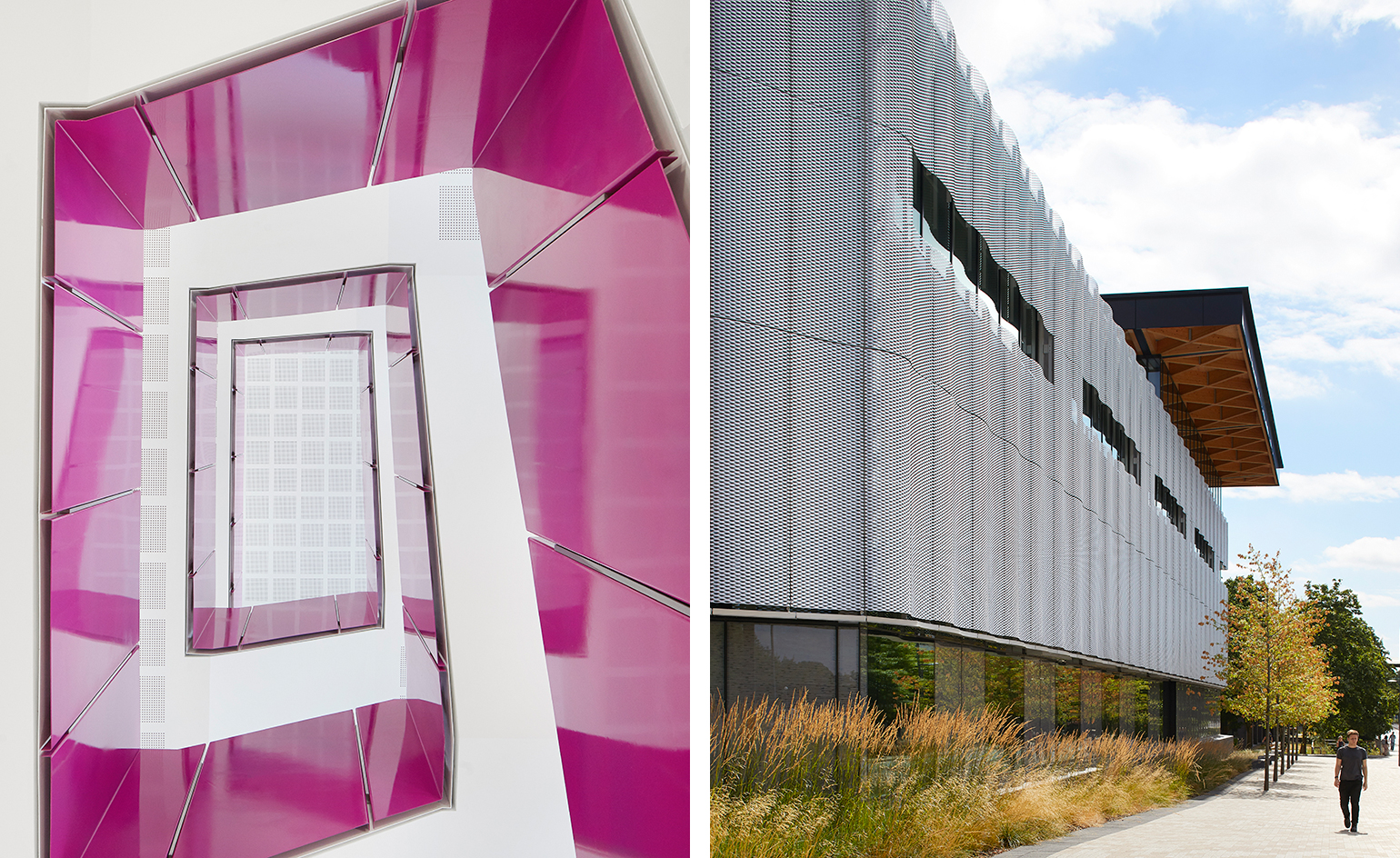
Given the confidential nature of the work undertaken within the four-storey, 33,000 sq m gross internal space, at its heart there are secure technical laboratories and engineering and design halls. But surrounding these rooms are many open terraces and spaces, individual booths plus an exhibition area, cafe and entrance hall to encourage cross-fertilisation and inter-disciplinary meetings, where applicable. All working spaces are designed with flexibility in mind, including reconfigurable internal walls and projection-friendly surfaces.
Architecturally, the building’s most impressive feature is its massive diamond-lattice, cross-laminated timber roof designed by Arup. This spans the whole structure, including the high outside entrance canopy propped up by two huge intersecting metal supports. The major glazing that makes up much of the centre’s walls is tempered by undulating exterior aluminium mesh cladding to help limit the sun’s heat and light from entering inwards while the surrounding landscaping – designed by Grant Associates – includes beds of native wild plants and a water course, to better integrate the building within its environment. Further ecological considerations of the design include a photovoltaic array on the roof and regenerative electrical heating connected to the University’s combined heat and power plant, all of which helped towards the building’s EPC ‘A’ rating and ‘Excellent’ BREEAM certification.
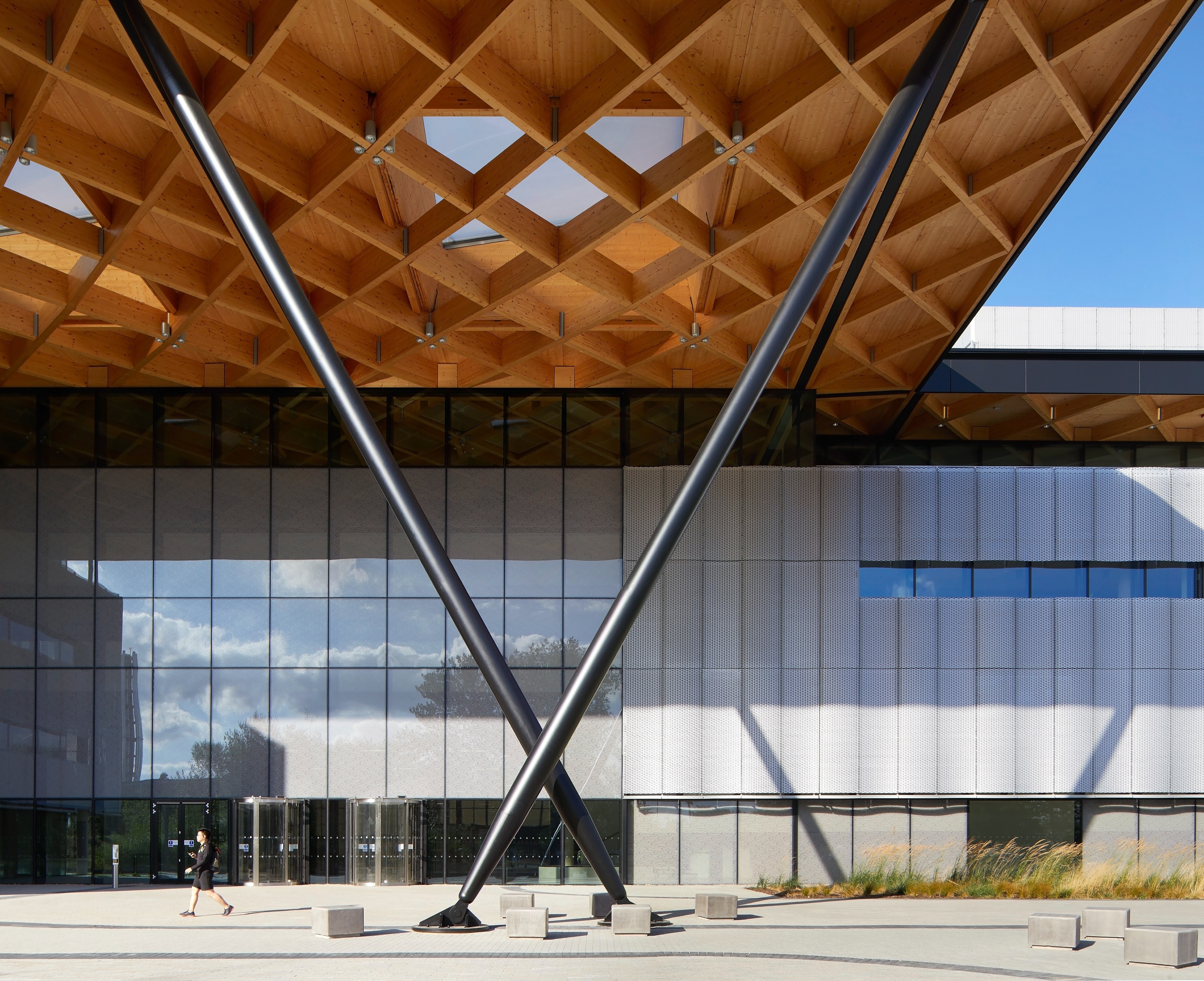
Inside the NAIC building, Cullinan Studio has created internal terraces surrounding the main working spaces on every floor to help users stay in touch with the natural world outside. As well as the physical benefits of exposure to natural light and air, rather than being tucked away in dark and sterile rooms, there are hopefully metaphorical benefits. Nature’s gentle encroach should be a subtle reminder that the products being developed need to tread more lightly within the environment they will ultimately operate. As Cullinan Studio’s design director Roddy Langmuir concludes: ‘We have tried to bring in natural light everywhere, marking the changing of the sun’s position across the day. Even deep inside the building, people have a connection with the day’s natural rhythms and changing seasons.’
INFORMATION
Wallpaper* Newsletter
Receive our daily digest of inspiration, escapism and design stories from around the world direct to your inbox.
Guy Bird is a London-based writer, editor and consultant specialising in cars and car design, but also covers aviation, architecture, street art, sneakers and music. His journalistic experience spans more than 25 years in the UK and global industry. See more at www.guybird.com
-
 Dior holds an enchanting Kyoto show in the midst of cherry-blossom season
Dior holds an enchanting Kyoto show in the midst of cherry-blossom seasonMaria Grazia Chiuri chose the grounds of Kyoto’s serene Tō-ji Temple to present a Fall 2025 collection that celebrated Dior’s longstanding links with Japan
By Jack Moss
-
 Giant rings! Timber futurism! It’s the Osaka Expo 2025
Giant rings! Timber futurism! It’s the Osaka Expo 2025The Osaka Expo 2025 opens its microcosm of experimental architecture, futuristic innovations and optimistic spirit; welcome to our pick of the global event’s design trends and highlights
By Danielle Demetriou
-
 The new Polaroid Flip unfolds to bring you pin-sharp instant photography
The new Polaroid Flip unfolds to bring you pin-sharp instant photographyPolaroid announces the Flip, an instant camera that blends its evergreen film technology with better results and more control
By Jonathan Bell
-
 EV start-up Halcyon transforms a classic 1970s Rolls-Royce into a smooth electric operator
EV start-up Halcyon transforms a classic 1970s Rolls-Royce into a smooth electric operatorThis 1978 Rolls-Royce Corniche is the first fruit of a new electric restomod company, the Surrey-based Halcyon
By Jonathan Bell
-
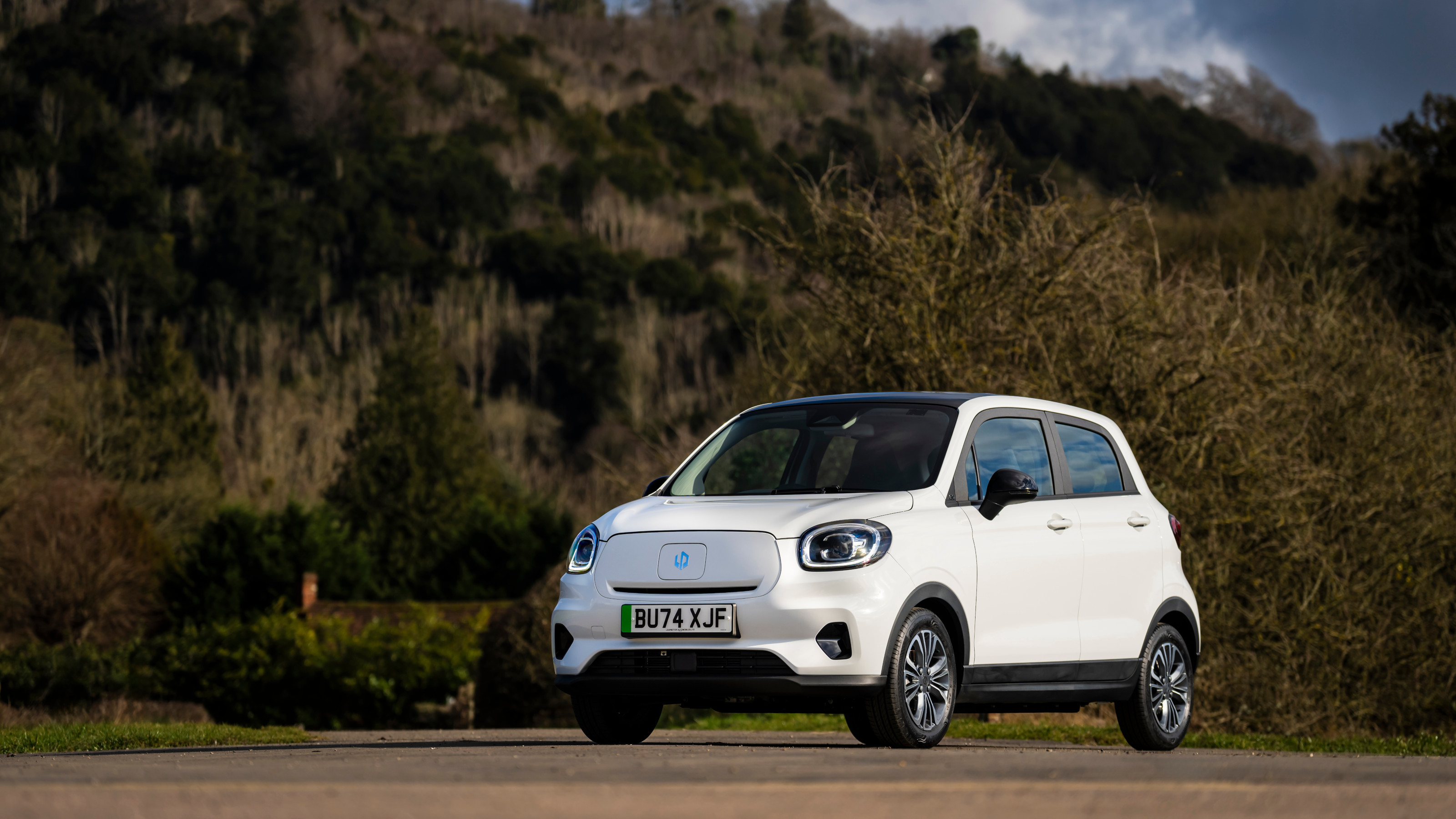 China’s Leapmotor pounces on the European car market with its T03 city car and C10 SUV
China’s Leapmotor pounces on the European car market with its T03 city car and C10 SUVLeapmotor’s tiny electric city car could be just the tonic for cramped urban Europe. We sample the T03 and its new sibling, the fully loaded C10 SUV, to see if the company’s value proposition stacks up
By Jonathan Bell
-
 We make off with a MOKE and experience the cult EV on the sunny backroads of Surrey
We make off with a MOKE and experience the cult EV on the sunny backroads of SurreyMOKE is a cult car with a bright future. Wallpaper* sat down with the company's new CEO Nick English to discuss his future plans for this very British beach machine
By Jonathan Bell
-
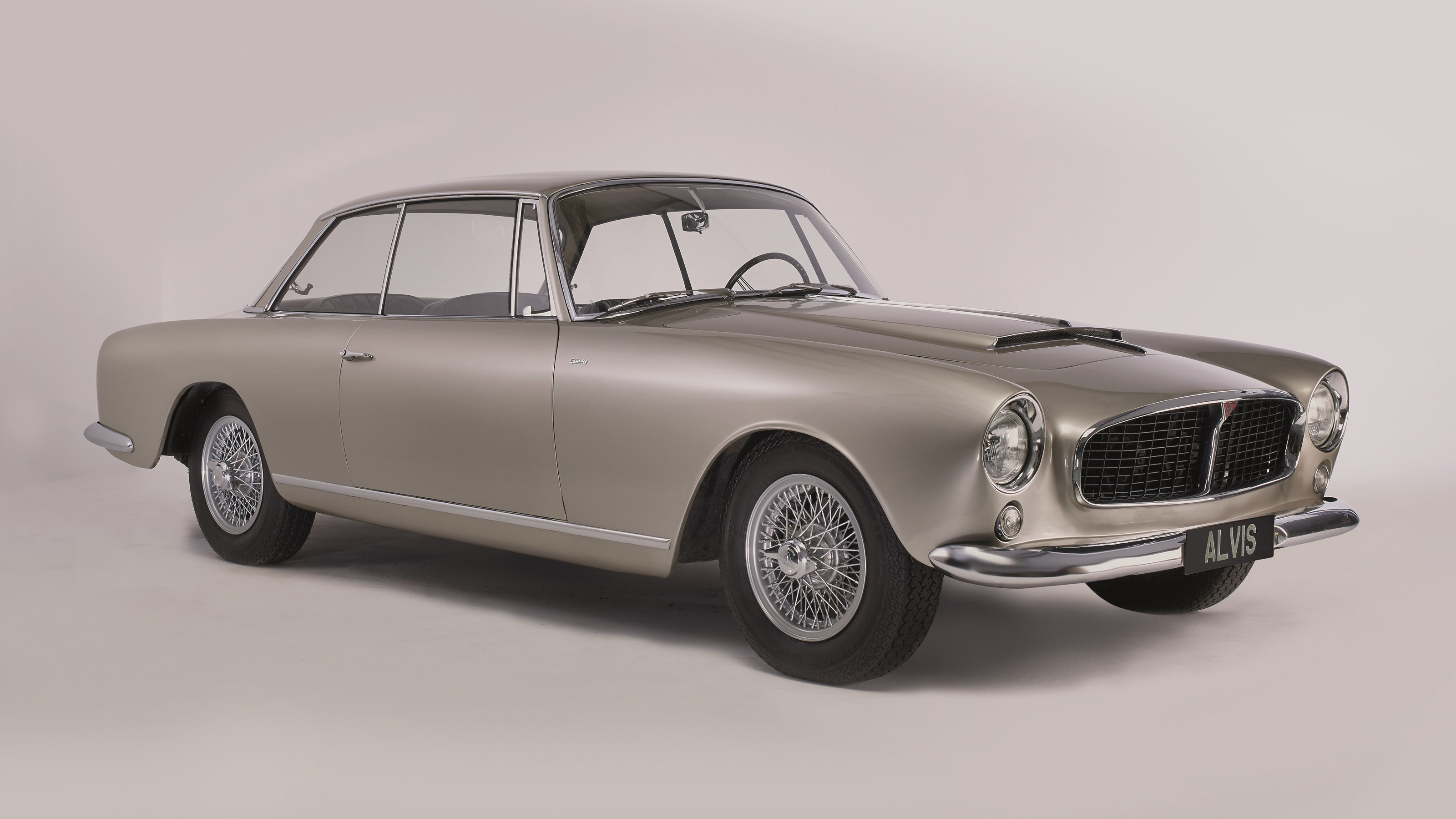 Meet the Alvis continuation series – a storied name in British motoring history is back
Meet the Alvis continuation series – a storied name in British motoring history is backThe Alvis name is more than a century old yet you can still order a factory-fresh model from its impressive back catalogue, thanks to the survival of its unique archive
By Josh Sims
-
 Hongqi’s Giles Taylor on the Chinese car maker's imminent arrival in the UK
Hongqi’s Giles Taylor on the Chinese car maker's imminent arrival in the UKHongqi makes China's state limousines. By 2026, it'll have a pair of premium EVs on UK roads. Giles Taylor, its VP of design, tells us about its design approach, and ambition in Europe
By Aysar Ghassan
-
 British sports car builder Caterham teams up with the RAF to create this bespoke machine
British sports car builder Caterham teams up with the RAF to create this bespoke machineHelicopter parts are repurposed for the bodywork of this Caterham Seven 360R, built in collaboration with RAF Benson
By Jonathan Bell
-
 Peugeot’s sparky 308 gets hybrid power and handsome lines
Peugeot’s sparky 308 gets hybrid power and handsome linesThe Peugeot 308 proves that mass-market design needn’t be dull, blending hybrid power with sharp lines and excellent detailing
By Jonathan Bell
-
 BMW Motorrad brings out the big guns for its newest cruisers
BMW Motorrad brings out the big guns for its newest cruisersBMW Motorrad R 18 Bagger and Transcontinental set the tone for high-voltage cruising with a brand collaboration with speaker specialist Marshall
By George Chapman